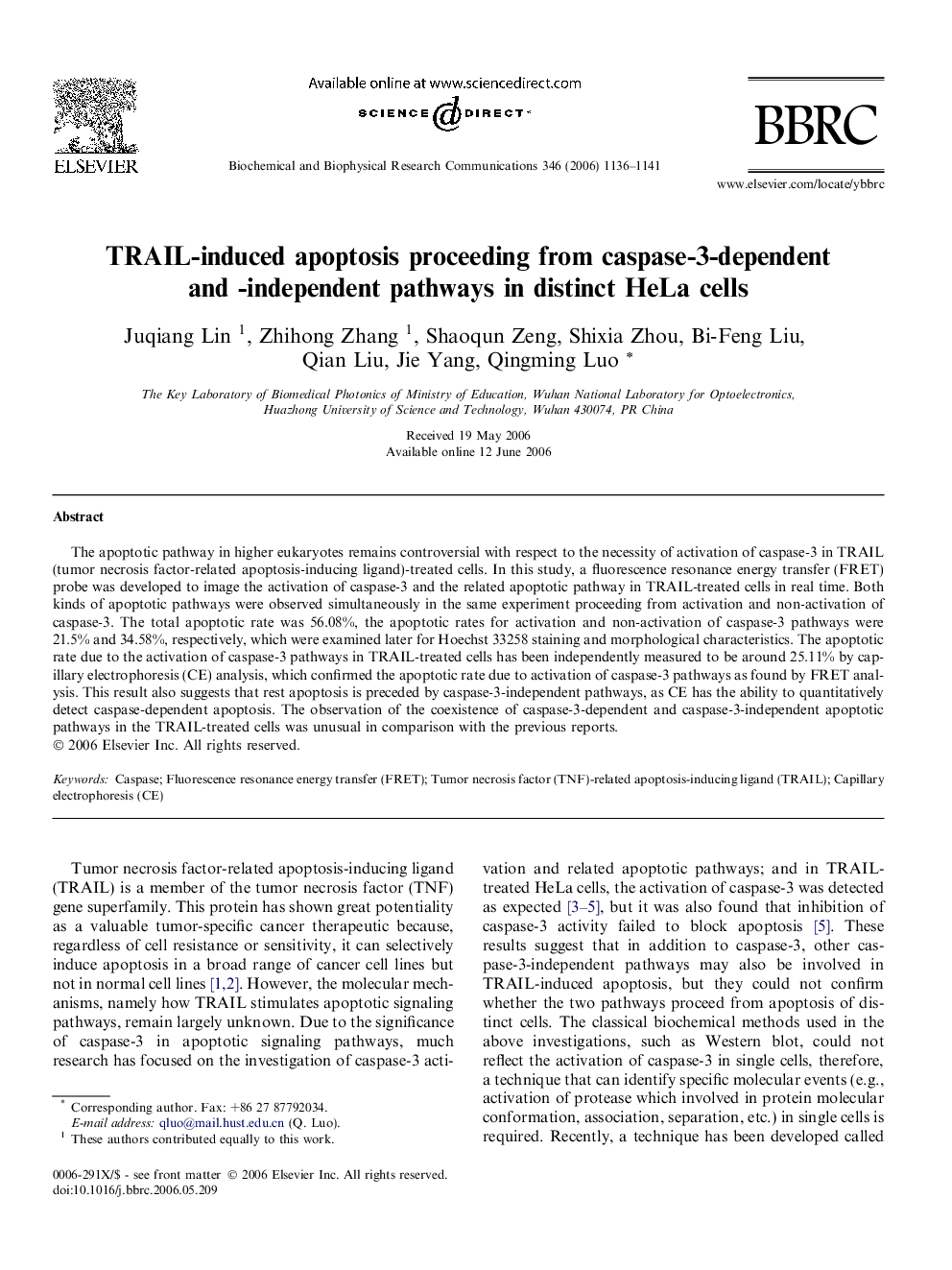| Article ID | Journal | Published Year | Pages | File Type |
|---|---|---|---|---|
| 1940968 | Biochemical and Biophysical Research Communications | 2006 | 6 Pages |
The apoptotic pathway in higher eukaryotes remains controversial with respect to the necessity of activation of caspase-3 in TRAIL (tumor necrosis factor-related apoptosis-inducing ligand)-treated cells. In this study, a fluorescence resonance energy transfer (FRET) probe was developed to image the activation of caspase-3 and the related apoptotic pathway in TRAIL-treated cells in real time. Both kinds of apoptotic pathways were observed simultaneously in the same experiment proceeding from activation and non-activation of caspase-3. The total apoptotic rate was 56.08%, the apoptotic rates for activation and non-activation of caspase-3 pathways were 21.5% and 34.58%, respectively, which were examined later for Hoechst 33258 staining and morphological characteristics. The apoptotic rate due to the activation of caspase-3 pathways in TRAIL-treated cells has been independently measured to be around 25.11% by capillary electrophoresis (CE) analysis, which confirmed the apoptotic rate due to activation of caspase-3 pathways as found by FRET analysis. This result also suggests that rest apoptosis is preceded by caspase-3-independent pathways, as CE has the ability to quantitatively detect caspase-dependent apoptosis. The observation of the coexistence of caspase-3-dependent and caspase-3-independent apoptotic pathways in the TRAIL-treated cells was unusual in comparison with the previous reports.
